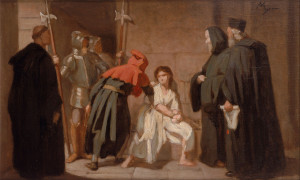 This is part of a continuing series where I investigate the claims made by a pamphlet that was left for me asserting that Catholicism is not Christian. You can read the pamphlet in it’s entirety here: (page 1 and page 2). Today we’ll be discussing the densely-packed and wide ranging section on page 2 entitled simply “Church”.
This is part of a continuing series where I investigate the claims made by a pamphlet that was left for me asserting that Catholicism is not Christian. You can read the pamphlet in it’s entirety here: (page 1 and page 2). Today we’ll be discussing the densely-packed and wide ranging section on page 2 entitled simply “Church”.
Stumbling out of the gate
This section begins with a few bruised assertions. First, it claims that Constantine established the ‘Roman’ church in 325 AD. This is a popular (and somewhat recent) attempt to tie the ‘creation’ of Catholicism to Constantine, but it’s just not true. Constantine did convert and made it legal to practice Christianity with the Edict of Milan. We’ll give the author of the pamphlet a free pass on the statements about Martin Luther, because there’s plenty more here to cover.
The following assertion that ‘True Christians trace their roots directly to Christ through the Waldenses and Ana-Baptists’ is a very confusing one. I am no expert on either group, however some research on Wikipedia yields the fact that the Waldenses was a movement that began around 1170 in France and the Ana-Baptists were later into the 16th century. I tried to find out more by following the quoted website, but it took me to a public library website from Illinois that did not seem to hold any relevance.
All founding aside, I simply assert that the most sure way to follow Christ is to belong to the Church that He founded. The Catholic Church holds an unbroken line of papal succession directly back to Saint Peter, who was given his authority directly from Jesus Christ. That places Jesus Christ as the founder of the Catholic Church, not Constantine for those of you keeping score.
This argument often spins off in one of two directions: people advocating for the authority of their own sect, and those that begin to attack the authenticity of papal succession. Countless gallons of ink (both real and digital) have been spilled about each of these topics and I can’t do them justice here. I often direct those that attack the line of papal succession to a very well-presented Wikipedia entry on the popes. It is not a tome, you don’t need to spend hours understanding it, just scroll and follow the dates.
Unfortunately, further discussion is often required for those that want to advocate for their own special brand of authority. To have an enriching discussion about this, I must first understand their argument and there’s not much I can do in this venue regarding that topic.
The Inquisitions
Next, the author attributes the murder of millions of these ‘true Christians’ to the Roman Catholic Church during the Inquisitions. The Church has a long history of addressing heresy in all of it’s forms, and in many cases this would be practiced in the form of a local inquisitional court. There is a very well-written article at Catholic.com that provides a primer regarding the Inquisition, and a much deeper historical dive over at the Catholic Encyclopedia.
Here are a few relevant segments from the Catholic.com article:
What “crimes” were tried in courts of inquisition?
Sixteenth-century Protestant reformers propagandized that inquisition courts were historically aimed at simple, Bible-believing Christians. For the most part, however, those prosecuted in the courts of the inquisition were not people with any organized theology of religious dissent. For the most part, they were the ignorant, the troublemakers, the braggarts and, all-too-often, the drunkards belching out foolishness when under the influence.
Much like any court today, the inquisition courts often functioned as a form of social control, aimed at those who publicly lived in a way contrary to accepted norms. In most countries, those on trial rarely were advocates of a contradictory or heretical theological system of beliefs. Fornication, adultery, refusal to attend the Sacraments, and disregard of common devotional practices were the common practices investigated by the inquisition courts. In fact, in many inquisition courts a major focus was on clergy living dissolute lifestyles, rather than laity.
Did medieval inquisition courts employ torture?
Common to judicial practice going back to Roman times, torture was used at times to obtain proof of accusations. But, again, the goal was not conviction of heretics but the salvation of their souls. Very often, the general laity simply wanted the heretic destroyed, while secular authorities wanted to punish. The courts of the inquisition hoped to bring the heretic back into the fold, and guidelines were strict against using torture as punishment. Numerous works of popular art notwithstanding, no priest or religious was allowed to take an active role in torture.
Although no such action can be justified today, it is important to note that the courts of the medieval inquisition were actually modifying and limiting a practice common to secular judicial proceedings of the time. The use of torture in inquisition courts was much less extensive, and far less violent, than the norms of secular courts.
One additional interesting fact: the oft-cited papal bull by Pope Innocent III that called for a ‘crusade’ also stressed confession, education, and many other methods aimed at bringing heretical people back to the fold. To be clear: the actions taken (deterioration to violence, harsh punishment handed down by secular courts based on the inquisition trials) are lamentable, but they are an undeniable part of history. I believe it is very important to get beyond the caricature and actually examine what happened, and the aforementioned tracts and articles provide a solid place to start that helps to illuminate those dark times.
Topped off with vitriol
As if this densely packed two paragraphs can’t get any better, the author tops off this section with a healthy dose of venom. The pamphlet states “The RCC says all their homosexual priests are ‘representatives of Christ'” and then continues to make further claims that priests are diseased perverts that molest children and spread AIDS.
This particular argument offends me greatly, because it misses one of the most important things about the Catholic Church: it is comprised of human sinners. Pointing out the public failings of priests as some sort of special example that invalidates the cause of the Church is a flawed premise. Painting stereotypes using broad brushes would not be acceptable for any other race, sexual orientation, religion, or affinity group… so why is it acceptable to do this to the Catholic priesthood? This practice slanders the vast majority of priests who are dedicated, chaste, holy men.
First, not all priests are homosexual. Secondly, the Church teaches that all priests (including those with same-sex attraction) act in the person of Christ when administering the Church’s sacramental rites. Further, the Catechism of the Catholic Church section 1584 teaches:
Since it is ultimately Christ who acts and effects salvation through the ordained minister, the unworthiness of the latter does not prevent Christ from acting. St. Augustine states this forcefully:
As for the proud minister, he is to be ranked with the devil. Christ’s gift is not thereby profaned: what flows through him keeps its purity, and what passes through him remains dear and reaches the fertile earth. . . . The spiritual power of the sacrament is indeed comparable to light: those to be enlightened receive it in its purity, and if it should pass through defiled beings, it is not itself defiled.
It is Christ that is acting to administer the sacraments. Despite the graces received by the sacrament of Holy Orders, priests must also suffer temptation and sometimes fall to sin. They are not perfect like Christ, they are the vessels through which Christ operates. Do we expect them to keep a higher standard than the rest of the world? Absolutely, but I don’t expect them to be perfect and in some cases they may fall into grave sin like any of the rest of us. Pope Francis even went so far as to call himself a sinner in a recent interview, much to the shocked gasps of the secular world.
This pamphlet repeats the ‘homosexual priests’ trope often, but why focus there? If we’re going scandal hunting, why don’t we mention any of the numerous other scandals in the Church’s history? How about the Church’s relationship with the Borgia family, who was associated with several popes and suspected of a long list of crimes such as murder, simony, bribery, and theft? Surely there is equally verdant ground for this argument beyond the pelvic issues that go on to reinforce my point: no one is free from sin, no matter their ecclesiastical role or station. To focus on an individual type of sin in an effort to discredit the Church or her priesthood is a crass and invalid argument.
We’ll be revisiting this pamphlet more often in the coming weeks, so stay tuned for more.

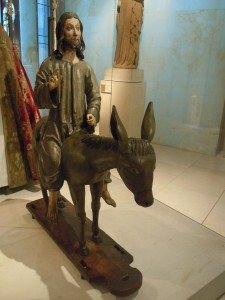
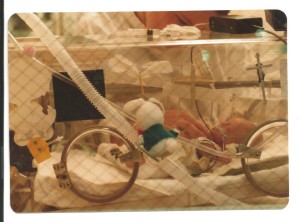


 Five years ago, I moved from Central Illinois to Denver for my job. This means that each year I look forward to travel around Christmastime, in order to allow me to spend the holidays with my extended family. This means we get to live with my parents for a few weeks, and that can makes it challenging to have our own family traditions.
Five years ago, I moved from Central Illinois to Denver for my job. This means that each year I look forward to travel around Christmastime, in order to allow me to spend the holidays with my extended family. This means we get to live with my parents for a few weeks, and that can makes it challenging to have our own family traditions.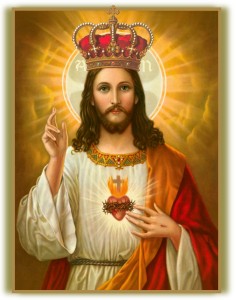 Today was the Feast of Christ the King, which marks the end of the Year of Faith. When I
Today was the Feast of Christ the King, which marks the end of the Year of Faith. When I 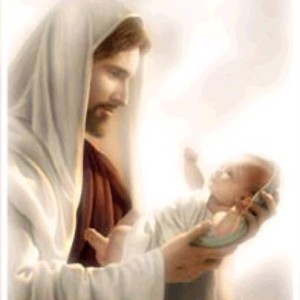 Last year on this day, my wife and I went through one of the hardest days of our married life: we
Last year on this day, my wife and I went through one of the hardest days of our married life: we 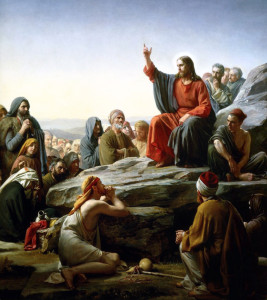 This is part of a continuing series where I investigate the claims made by a pamphlet that was left for me asserting that Catholicism is not Christian. You can read the pamphlet in it’s entirety here: (
This is part of a continuing series where I investigate the claims made by a pamphlet that was left for me asserting that Catholicism is not Christian. You can read the pamphlet in it’s entirety here: ( This is part of a continuing series where I investigate the claims made by a pamphlet that was left for me asserting that Catholicism is not Christian. You can read the pamphlet in it’s entirety here: (
This is part of a continuing series where I investigate the claims made by a pamphlet that was left for me asserting that Catholicism is not Christian. You can read the pamphlet in it’s entirety here: ( I went to lunch with some coworkers today. We went to an establishment that served alcohol, and we got into a discussion about the frozen margarita machines and the Jagermeister chiller that they had behind the bar. The conversation lingered on that liquor, and I got to throw out one of my favorite little trivia facts:
I went to lunch with some coworkers today. We went to an establishment that served alcohol, and we got into a discussion about the frozen margarita machines and the Jagermeister chiller that they had behind the bar. The conversation lingered on that liquor, and I got to throw out one of my favorite little trivia facts: